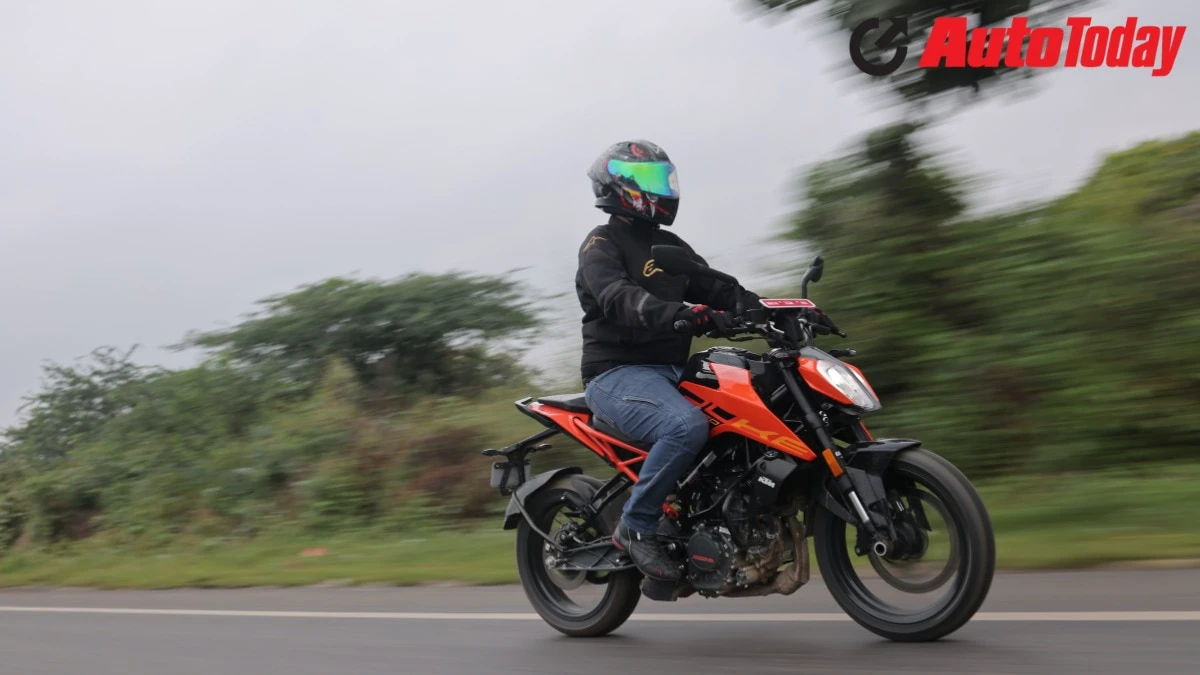The Duke badge carries weight. It’s built a reputation for aggressive design, sharp dynamics and a willingness to prioritise performance over comfort.
With the new KTM Duke 160, the brand wants to lower the entry barrier without diluting that DNA. But in a segment full of competent commuters and sporty 160s, is KTM offering an authentic Duke experience or just a familiar face with fewer thrills? More importantly, does KTM DNA survive in this smaller package, or is it just another commuter in an orange zoot suit? We took it for a spin in and around Gurugram to try and find out.
Is it a looker?
On the design front, KTM hasn’t compromised. The Duke 160 looks almost identical to its bigger siblings, carrying the same muscular tank extensions, split LED headlamp, edgy panels and upright stance. Park it next to the 200 or even the 250, and the casual eye won’t spot the difference. That’s a big win, because most 160s in this space don’t feel half as premium. Sure, there’s the MT-15, which is this motorcycle’s biggest rival, has a unique design of its own. Apart from the fairly massive gap where the engine casing sits, it looks every bit a Duke. The orange-and-black livery, the exposed trellis frame, and the stance make the 160 one of the most striking motorcycles in its class. KTM knows buyers in this segment want presence, and the 160 delivers plenty of it. If design were the only criterion, the baby Duke would have already sealed the deal.
How is it different from the Duke 200?
But design is only half the story. The Duke 200 remains KTM’s benchmark in this segment, and the 160 is designed to sit below it, both in price and performance. The heart of the matter is the 164.6cc single-cylinder engine. At 15.7bhp and 14.6Nm, it makes significantly less power than the 25bhp, 19.3Nm of the Duke 200. Another significant detail here is the fact that this is an SOHC unit, while the Duke 200 gets a DOHC setup, which does compromise on that patented Duke experience, but I’ll get to that in a bit. Another change is the rear sprocket setup, which is 45 teeth instead of the Duke 200’s 42 teeth. That’s not all, the Duke 160 is a whole 12kg lighter than the bigger sibling, tipping the scale at 147kg. This is thanks to a lighter frame, thanks to the main frame tubes being optimised, and bionic wheels with a hollow axle. The 37mm WP Apex USD fork is also lighter, and so are the casted pillion footpegs, rear radial tyres and tyre hugger as well. In fact, even the grab handles are said to be lighter. KTM has also revised the steering geometry via a 12mm shorter front fork and a 0.5 degree sharper rake. However, the ergonomics remain the same thanks to the neatly integrated handlebar riser. There’s also a larger 320mm disc at the front, compared to the 200’s 300mm, and the rear tyre is a 140/60 as opposed to the 200’s 150/60 section. The saddle height sits lower at 815mm, the front suspension has less suspension travel, and it has a 10-litre fuel tank, rather than the 13-litre one on the Duke 200. The 160 also misses out on some premium touches: the instrument cluster is simpler, and the exhaust note lacks the rasp KTM riders expect. Yes, it still gets upside-down WP forks, ByBre brakes and a trellis frame, elements that justify its KTM badge. But on the whole, the Duke 160 feels like the 200’s younger cousin trying to fit in.
